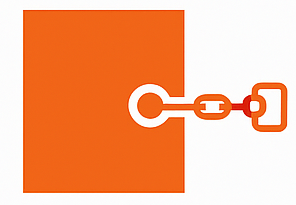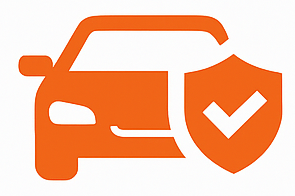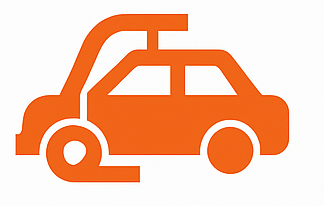Preparing for a Bailiff's Visit: A Practical Guide to Protect Your Home and Vehicle
Speak to a BAILIFF Expert - £35When facing enforcement action, knowing your rights can make the difference between being bullied and being prepared. If a bailiff is due to visit, don't panic, take calm, measured steps to secure your property and protect your interests. This guide sets out what you can and should do in anticipation of a bailiff visit under current legislation, including Schedule 12 of the Tribunals, Courts and Enforcement Act 2007 and the Taking Control of Goods Regulations 2013.
 1. Keep Your Windows Open (Yes, Really)
1. Keep Your Windows Open (Yes, Really)
Contrary to old myths, bailiffs cannot enter through open windows, unless they are executing a warrant for an unpaid magistrates' court fine. Regulation 20 of the Taking Control of Goods Regulations 2013 makes it clear: they may only enter through a door or usual means of access (such as a loading bay or vehicle entrance).
So, feel free to keep your home ventilated. They cannot climb in. Not legally.
 2. Lock the Door, Leave the Chain On
2. Lock the Door, Leave the Chain On
If a bailiff calls, you are under no obligation to let them in. In fact, you should never open the door fully. Use a door chain. Better yet, install a Wi-Fi video doorbell and answer through your phone. Ask them to hold their ID up to the camera.
Without entry, the bailiff cannot take control of goods inside your home, unless they have already done so on a previous visit.
 3. Record Everything
3. Record Everything
Use your mobile phone to record the entire interaction. If the bailiff is wearing a body-worn camera, ask for the footage later. Fit a Wi-Fi doorbell that records audio and video. You're entitled to record on your own property. Never state your name or confirm any identity at the door, doing so may be used to escalate the enforcement.
 4. Protect Your Vehicle, It Will Be Targeted
4. Protect Your Vehicle, It Will Be Targeted
Vehicles are among the first assets bailiffs look to control. They can clamp or remove your vehicle if it's on a highway or land where you live or carry on business. Here's how to make enforcement harder:
(a) Park it on a neighbour's driveway (with permission), or in a space not connected to your residence or trade. Paragraph 14(6) of Schedule 12 of the Tribunals Courts and Enforcement Act 2007 applies only where the vehicle is on land where you live or work.
(b) Display a Blue Badge clearly inside the vehicle if applicable, Regulation 4(1)(d) of the Taking Control of Goods Regulations 2013 exempts it.
(c) Take a comprehensive video of your vehicle's condition and contents. Record slowly, timestamp it, and use a fill-light to capture details. If timestamping is unavailable, make a sworn affidavit.
(d) Place a tracker tag inside the vehicle, this will help you monitor its location and support recovery or legal action if enforcement breaches occur.
(e) Consider changing the number plate to a cherished registration to foil ANPR tracking, though this doesn't stop physical control, it does complicate enforcement.
 5. If the Bailiff Clamps or Removes the Vehicle
5. If the Bailiff Clamps or Removes the Vehicle
Use your video evidence to show the vehicle was undamaged beforehand. Under Paragraph 35 and Paragraph 66 of Schedule 12, if damage occurs, both the bailiff and creditor may be liable. You may claim for the full replacement value if the car is written off due to mishandling.
 6. Demand the Bailiff Produces Their Authority
6. Demand the Bailiff Produces Their Authority
You're entitled to see the bailiff's ID and the warrant they're enforcing. Paragraph 26 of Schedule 12 requires this on request. If they refuse, everything that follows is void, including enforcement fees.
Use a template letter demanding this and hand it through the letterbox or display it via your doorbell camera. Failure to comply with Paragraph 26 invalidates their entire procedure and opens the door to a damages claim.
 7. If the Bailiff Acts Illegally or Under a Defective Warrant
7. If the Bailiff Acts Illegally or Under a Defective Warrant
Paragraph 66 of Schedule 12 provides redress. If the bailiff acts in breach or under a defective instrument, the court may:
(a) Order the return of your goods
(b) Award you damages
Fees incurred during unlawful enforcement are also invalid under Regulation 3 of the Taking Control of Goods (Fees) Regulations 2014, which ties all charges to compliance with the Schedule 12 procedure.
If you've paid fees already, you may reclaim them.
 8. Never Confirm Your Name or Address
8. Never Confirm Your Name or Address
Unless speaking to a uniformed police officer on duty, you are not required to confirm your identity to a bailiff. Doing so may give them the information they need to proceed. Stay calm and silent, or respond with, "I do not confirm anything at this address."
 9. Special Rule: Court Fines
9. Special Rule: Court Fines
Enforcement for unpaid court fines carries slightly different rules. If this applies, specific procedures are required to stop the enforcement or cancel the warrant. Seek guidance tailored to that process. Never assume all debts are treated the same.
Final Thoughts
Bailiffs rely on your panic, silence, or ignorance. By staying calm, informed, and prepared, you take away their advantage. If your rights are breached, you can fight back, with evidence, legal remedy, and confidence.
